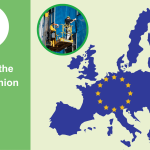|
|
|
National Building Renovations Plans are a once-in-a-generation opportunity.
Brussels, 4th June 2025 – Last week, the World Meteorological Organisation published its Global Annual to Decadal Climate Update, stating that there is a 80% chance that at least one of the next five years will exceed 2024 as the warmest year on record. These rising temperatures, resulting from the climate crisis, are already having a profound impact on households, giving rise to more people falling into summer energy poverty. Climate Action Network (CAN) Europe’s latest briefing highlights the significant role that National Building Renovation Plans play in creating a just and climate-resilient built environment. The growing phenomenon of people being unable to adequately cool their homes needs to be prioritised in the National Building Renovations Plans (NBRPs) that are to be submitted by EU Member States to the European Commission by the end of 2025. “NBRPs are not just a political opportunity, they are a moral obligation. Energy poverty is becoming a year-round issue for millions of households who do not have access to or can’t afford the means to keep their homes adequately cool or warm throughout the seasons. Not only does this pose a serious health risk, but it deepens social inequality and exclusion. Governments need to make this a priority in their NBRPs submissions at the end of the year”. – Mónica Vidal, Senior Built Environment Campaigner at Climate Action Network (CAN) Europe The latest data from Eurostat on households that can’t adequately cool their homes is from 2012, which is 19% of EU households. This figure is outdated and very likely has increased due to higher energy bills and warmer temperatures. Acquiring new data on summer energy poverty, measuring its impact and setting targets to address the issue needs to become a priority, especially for countries in southern Europe with warmer climates. The new briefing includes a set of policy recommendations featuring measures such as the implementation of neighbourhood and district-level deep renovation programmes and the integration of passive cooling solutions, while integrating spatial planning measures to counter the urban heat island effect. These recommendations aim to support holistic and climate-resilient renovation strategies that not only reduce energy demand but also enhance the quality of people’s lives. A range of existing examples from across Europe are also part of this guiding document that demonstrate how the growing need for cooling can be addressed in fair, practical and sustainable ways. “Governments really need to change course of action”, continues Mónica Vidal, “climate change is already reshaping our lives, and the urgency to prepare for a climate-resilient future has never been greater. The NBRPs can be a powerful tool to drive forward a just and resilient transformation of our built environment.” ENDS
Note to editors The 2024 recast of the Energy Performance of Buildings Directive (EPBD) is providing a set of parameters and tools that will shape how Member States (MS) are going to respond to this challenge. Amongst its key requirements is the first draft of the National Building Renovation Plans (NBRPs), to be delivered by the end of December 2025. These plans, which will be updated every five years, will guide national efforts to transform their building stock to take full advantage of emerging opportunities due to technological advancements and rising social awareness. |
|
For more information and media requests: James O’Connor, Senior Communications Officer: james.oconnor@caneurope.org |
|
|




